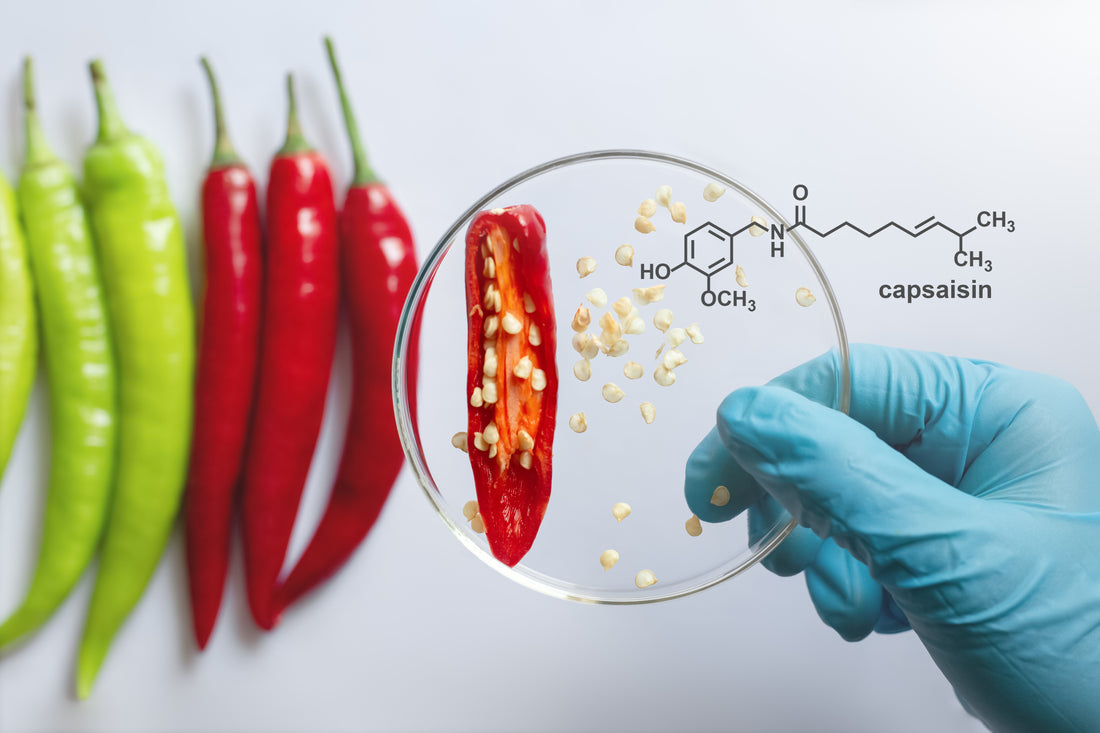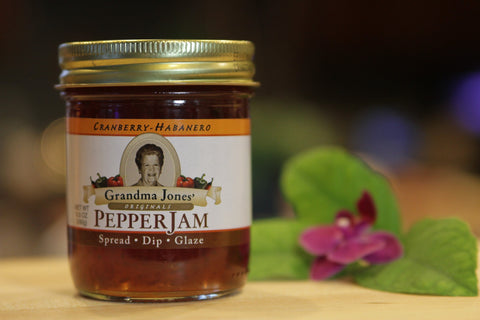
"The Science of Pepper Jelly: Understanding the Balance of Sweetness and Spice"
Share
Introduction
Pepper jelly is a delightful condiment that has gained popularity for its unique blend of sweetness and spice. Combining the heat of peppers with the sweetness of sugar, this versatile jelly can be used in a variety of dishes, from appetizers to desserts. But what is the science behind this delicious concoction, and how do the flavors of sweetness and spice come together to create such a harmonious taste experience? In this comprehensive guide, we'll delve into the science of pepper jelly, exploring the chemistry of flavor and the art of balancing sweetness and spice.

I. The Chemistry of Flavor
A. Sweetness
Sugar is the primary source of sweetness in pepper jelly. When sugar molecules come into contact with the taste receptors on our tongues, they activate the sensation of sweetness. The addition of sugar to pepper jelly helps to balance the heat from the peppers and create a more palatable and enjoyable flavor experience.

B. Spice
Capsaicin is the compound responsible for the heat in peppers. When capsaicin molecules interact with the heat-sensitive receptors in our mouths, they create the sensation of spiciness or heat. The amount of capsaicin in a pepper is determined by factors such as the type of pepper and its growing conditions. By carefully selecting the peppers used in pepper jelly, you can control the level of heat and create a balance between sweetness and spice.

II. Balancing Sweetness and Spice
A. The role of pectin
Pectin is a natural substance found in the cell walls of plants, and it plays a crucial role in the texture and consistency of pepper jelly. When combined with sugar and acid (typically from vinegar or citrus juice), pectin forms a gel-like structure that gives pepper jelly its characteristic thickness and spreadable consistency. By adjusting the proportions of sugar, acid, and pectin in your pepper jelly recipe, you can control the balance of sweetness and spice, as well as the overall texture of the jelly.

B. Experimenting with different peppers
The type of peppers used in pepper jelly can greatly impact the balance of sweetness and spice. By experimenting with different types of peppers, you can create a custom pepper jelly blend with the perfect heat level and flavor profile to suit your preferences. Consider using a combination of mild, medium, and hot peppers to create a complex and nuanced flavor experience.
III. Enhancing the Flavor Profile
A. Incorporating fruits and herbs
To add depth and complexity to the flavor of your pepper jelly, consider incorporating fruits, herbs, or other flavorings. Fruits can add natural sweetness and complementary flavors, while herbs and spices can contribute interesting notes and complexity. Some popular fruit and herb combinations for pepper jelly include:
- Pineapple-habanero
- Raspberry-jalapeño
- Mango-serrano
- Roasted red pepper and garlic
- Chipotle-lime

Grandma Jones' Originals Cranberry Habanero Pepper Jelly
B. Controlling heat levels
If you're looking to create a milder pepper jelly, you can adjust the heat level by using more mild peppers or bell peppers in your recipe. You can also remove the seeds and membranes from the peppers, which contain a significant amount of capsaicin, to reduce the heat. Conversely, if you prefer a spicier jelly, you can increase the proportion of hot peppers in your recipe or use peppers with higher Scoville ratings.

IV. The Art of Tasting and Pairing
A. Tasting pepper jelly
When tasting pepper jelly, pay attention to the initial sweetness, the development of heat, and the balance between the two. Notice any additional flavors from the fruits, herbs, or spices used in the jelly. By understanding how the flavors interact and complement each other, you can further refine your pepper jelly recipe or create new and exciting flavor combinations.

B. Pairing with food
The unique balance of sweetness and spice in pepper jelly makes it an excellent accompaniment to a variety of foods. Some popular pairings include:
- Cheese and crackers – A classic appetizer pairing, with the creaminess of cheese balancing the sweet heat of the jelly.
- Grilled meats – Use pepper jelly as a glaze or marinade for pork, chicken, or salmon.
- Sandwiches and burgers – Add a dollop of pepper jelly for an unexpected burst of flavor.
- Roasted vegetables – Drizzle pepper jelly over vegetables like Brussels sprouts or sweet potatoes for a sweet and spicy twist.
- Desserts – Incorporate pepper jelly into cheesecakes, tarts, or ice cream for a unique and delicious treat.

Grandma Jones' Originals Pepper Jelly with Pork featuring southwestern chipotle pepper jelly
Conclusion
The science of pepper jelly is a fascinating exploration of the chemistry of flavor and the delicate balance between sweetness and spice. By understanding the roles of sugar, capsaicin, and pectin, and experimenting with different peppers, fruits, and herbs, you can create a delicious and versatile condiment that enhances a wide range of dishes. So grab your peppers and start experimenting with the sweet heat of pepper jelly today!

Grandma Jones' Originals Traditional Pepper Jelly with Cream Cheese, Crackers, and Cheese
